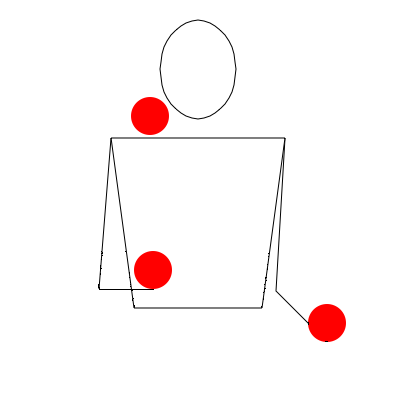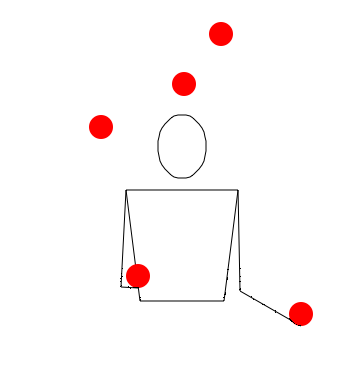
Cascade (juggling)
Encyclopedia

Juggling
Juggling is a skill involving moving objects for entertainment or sport. The most recognizable form of juggling is toss juggling, in which the juggler throws objects up to catch and toss up again. This may be one object or many objects, at the same time with one or many hands. Jugglers often refer...
, a cascade is the simplest pattern achievable with an odd number of props. The simplest cascade is the three-ball
Ball
A ball is a round, usually spherical but sometimes ovoid, object with various uses. It is used in ball games, where the play of the game follows the state of the ball as it is hit, kicked or thrown by players. Balls can also be used for simpler activities, such as catch, marbles and juggling...
cascade. This is therefore the first pattern that most jugglers learn.
Three-ball cascade
For the three-ball cascade the juggler starts with two balls in one hand and the third ball in the other hand. One ball is thrown from the first hand in an arcArc (geometry)
In geometry, an arc is a closed segment of a differentiable curve in the two-dimensional plane; for example, a circular arc is a segment of the circumference of a circle...
to the other hand. Before catching this ball the juggler must throw the ball in the receiving hand, in a similar arc, to the first hand. The pattern continues in this manner with each hand in turn throwing one ball and catching another.
All balls are caught on the outside of the pattern (on the far left and right) and thrown from closer to the middle of the pattern. The hand moves toward the middle to throw, and back towards the outside to catch the next object. Because the hands must move up and down when throwing and catching, putting this movement together causes the left hand to move in a counterclockwise motion, and the right hand to move in a clockwise
Clockwise
Circular motion can occur in two possible directions. A clockwise motion is one that proceeds in the same direction as a clock's hands: from the top to the right, then down and then to the left, and back to the top...
motion.
This pattern is achievable with a wide array of props besides regular balls. Commonly used props are clubs
Juggling club
Juggling clubs, or simply clubs are a prop used by jugglers, as are other props such as balls or rings. A typical club is in the range of long, weighs between , is slim at the "handle" end, and has its center of balance nearer the wider "body" end...
, rings
Juggling ring
Juggling rings, or simply "rings", are a popular prop used by jugglers, usually in sets of three or more, or in combination with other props such as balls or clubs. The rings used by jugglers are typically about in diameter and thick....
and scarves. Because of their slow falling speed due to high air resistance
Drag (physics)
In fluid dynamics, drag refers to forces which act on a solid object in the direction of the relative fluid flow velocity...
, scarves are often used as a first prop for beginning jugglers.
The cascade is only performed with an odd number of objects (3, 5, 7, etc.) The basic pattern for an even number of objects is the fountain
Fountain (juggling)
The fountain is a juggling pattern that is often used for juggling an even number of objects. In a fountain, each hand juggles separately, and the objects are not thrown between the hands. For example, in a four-ball fountain, each hand juggles two balls independently.A fountain can be synchronous...
.
Greater numbers of props

, from alternating hands, all but one prop (in the same hand as the first throw, which started with one more prop than the other) before any catches are made.

